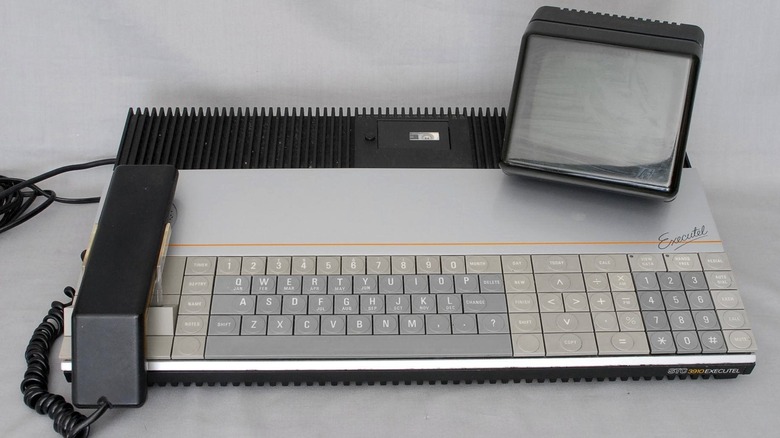The STC Executel Was One Of The First Smartphones In 1984
In 1984, a gallon of gas cost $1.13. For a mere $3.36, you could see a movie (maybe Ghostbusters). The Dow Jones Industrial Average (the "stock market") closed at 1,211, and stratospherically high-interest rates bounced between 11.5% and 13.75%.
Although first created in 1973, cell phones had only just begun to make their way to the zeitgeist around this time. These were a far cry from the ubiquitous little flat brick phones that nearly every human being carries with them today. Oh no, these quite literally could only do one thing ... make phone calls. And while they were technically "mobile," they most certainly weren't easy to carry around.
The Simon Personal Communicator, made by IBM in 1992, is considered to be the first smartphone. But way back in '84, a U.K. company called STC Telecommunications came out with what some called an actual "smart" phone, although not how we think of them today. Keep in mind that old-school rotary phones were still used in many homes worldwide at the time.
Backed by a £500,000 advertising campaign aimed at top business executives, STC launched the "Executel" desktop information system.
Behold the glory of 1984 technology!
The Executel, referred to as the "world's most advanced executive communications unit," integrated a phone and a computer, complete with a full QWERTY keyboard and a 5-inch black and white CRT monitor. It was able to store a whopping 235 phone numbers, had a robust calendar feature, and could be used as a notepad or an electronic diary (for 20 years, according to the advertising jargon). A mini-cassette tape stored all the data. Since was 1984, the age of advanced consumer technology was just beginning to dawn, so this was big-time innovation!
The Executel phone could be operated on "hands-free" mode to use its many fancy computer features simultaneously. Short-cut keys for quick and easy access to the calendar functions were surely an essential feature that all "top executives" needed to properly schedule their meetings and appointments.
STC called it an "integrated, multifunctional, network-linked, public-data, desk communication telephone." Since it was hard-wired to a landline, it was relegated to whatever dial-up networking was available at the time. An ad brags about its ability to dial and redial numbers with the touch of a single button. If you ever had to use a rotary phone, this was actually a wonderful invention.
According to YouTuber Techmoan, only 5,000 were sold in the UK for about 1,400 pounds. It was never sold in the United States.
